At Camp with the Standing Rock Pipeline Protesters
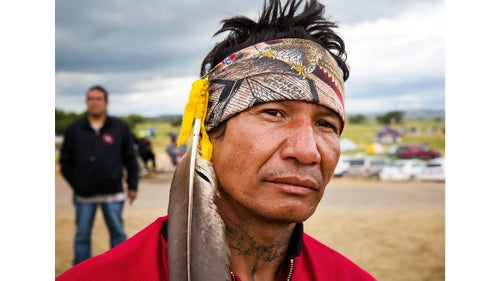
I first made the 1,600-mile journey from Berkeley, California, to the Standing Rock Sioux Reservation in late August and again in early September to document this latest skirmish in the fight to shield fresh water from pollution, to keep fossil fuels in the ground, and to ensure greenhouse gasses stay out of the atmosphere.
When I arrived, I realized there are two major stories unfolding here on the windswept prairie of North Dakota. One of them, the one that has drawn the most media attention, plays out in rallies and hashtags, Facebook Live streams, and confrontations with pipeline security workers. The other is more difficult to see unless you visit the camp itself, where old friends and long estranged tribes have reunited, and people share songs, prayers, and stories as they articulate a future in which tribal lands are no longer national sacrifice zones and the zero-sum logic of industry is not taken for granted.
Photo: For nearly six months, Frank Archambault of the Standing Rock Sioux has camped with other protesters on the edge of his tribeÔÇÖs reservation, near where the Dakota Access Oil Pipeline would plunge under the Missouri River. A single father of five, heÔÇÖs concerned that if the pipeline bursts or leaks, it will pollute the Missouri, poisoning the source of Standing RockÔÇÖs water and potentially sickening his kids. “The project angers me,ÔÇŁ Archambault says. ÔÇťWith this pipeline, they’re basically saying they donÔÇÖt care about my children. As a parent, that hurts.ÔÇŁ

Riders lead a protest march out of camp toward a nearby Dakota Access Pipeline construction site in late August. With thousands of of people living near the oil pipelineÔÇÖs proposed route, such marches are a regular occurrence and usually attract hundreds of participants.
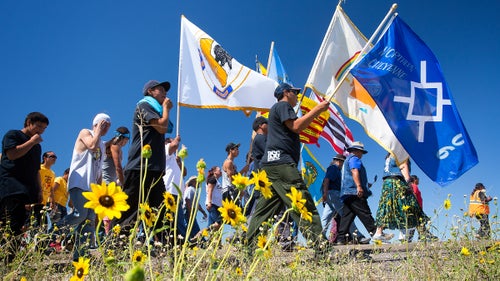
As of early September, organizers were estimating that members of nearly 300 Native American tribes had flocked to North Dakota to oppose construction of the Dakota Access Pipeline. Here, flags from the Cheyenne River Sioux, the Yankton Sioux, Lower Brule Sioux, Apsaalooke (Crow) Nation, and others fly during a march to a pipeline construction site.
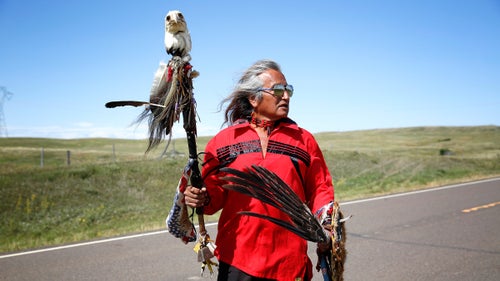
Waki Little Thunder of the Rosebud Sioux Tribe returns to camp after a march to the proposed route of the Dakota Access Pipeline near the Standing Rock Reservation. The marches are an opportunity to not only build momentum for the movement and attract media attention, but also for prayer, ceremony, and celebration.
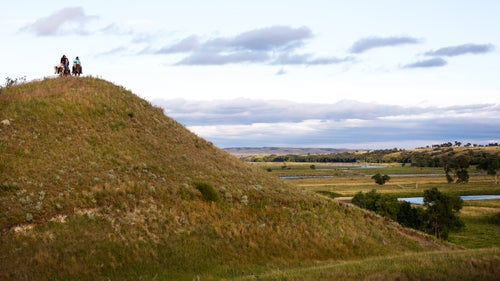
Riders stand on a hill above the confluence of the Missouri and Cannonball rivers on a warm August evening. This terrain, a lush bottomland of channels and marshes, is held sacred by the Sioux. It is also claimed by the U.S. Army Corps of Engineers, which uses it as a floodplain for the Oahe Dam, downstream on the Missouri.
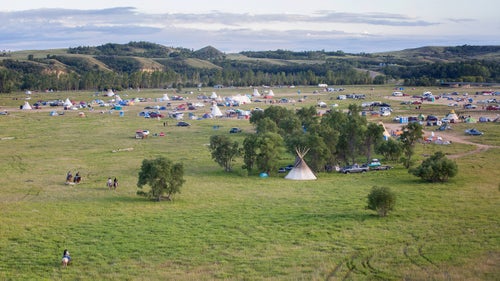
Night falls on the camp near the Dakota Access Pipeline on the edge of the reservation. Protesters first began camping here in early April, before the last winter snow had melted. By late August, thousands of people were camping in the area. Today, most of the open space in this photo is occupied.
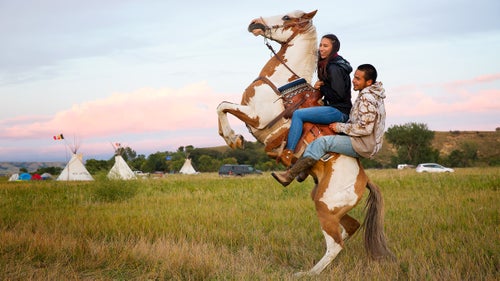
Stevana Salazar (left) of the Kickapoo Tribe of Texas rides with Arlo Standing Bear, Oglala Lakota from Allen, South Dakota. Horses are ubiquitous in camp, as riders keep the peace, scout for activity on the pipeline, and compete in races and games.
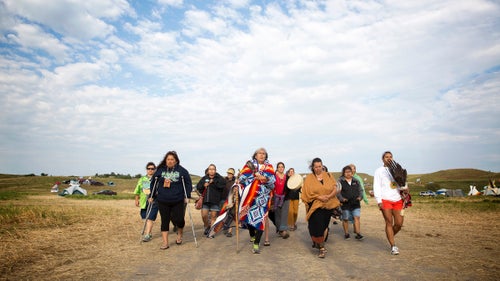
Peggy Wellknown Buffalo of MontanaÔÇÖs Apsaalooke (Crow) Nation leads a group of women through camp to the banks of the Cannonball River for a ceremony just after dawn. Those whoÔÇÖve gathered to oppose the pipeline have frequently been described as activists and demonstrators by the media, but many of them argue those terms are inaccurate. They say the camp is a place for peace and prayer, and that they have come to protect, not protest.
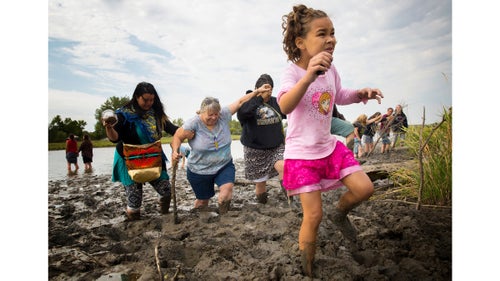
Isabella Flannery (9) of Kansas City, Missouri, picks her way through deep mud after praying with her mother, Stella, and other women on the banks of the Cannonball River near camp. Isabella and Stella came to North Dakota out of concern that if an accident occurs and the pipeline spills crude into the Missouri River, it will pollute not only Standing RockÔÇÖs water supply, but also their own and that of many others who live downstream.
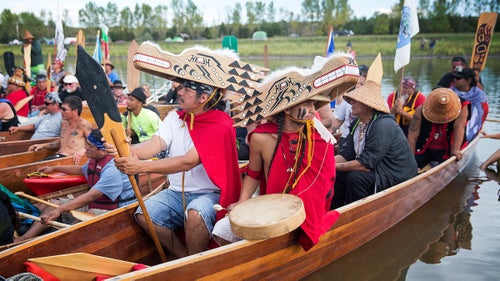
Marco Black (left) and Micah Masten of the Quinault Indian Nation in Washington State wear wolf masks during a ceremony on the banks of the Cannonball River near the protest encampment. The Quinault Tribe, along with paddlers from tribes across the Pacific Northwest and elsewhere, had just canoed down the Missouri from Bismarck, the North Dakota Capitol.